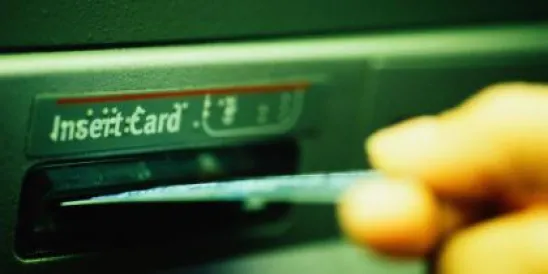The CFPB issued its third biennial report on the credit card market last week. The report represents the first major report issued by the CFPB since former Director Cordray’s resignation and President Trump’s designation of Mick Mulvaney as Acting Director.
The Credit Card Accountability Responsibility and Disclosure Act of 2009 (CARD Act) requires the CFPB to perform periodic market reviews. The CFPB’s first CARD Act report was issued in October 2013 and its second report was issued in December 2015. Unlike those reports, the new report does not identify “areas of concern” or “areas of interest” that create risks for consumers and instead takes an objective approach to the information presented.
Also unlike the prior reports, the new report does not begin with an introductory message replete with editorializing similar to the “Message from Director Corday” that began the prior reports. In addition, the CFPB’s press release announcing the new report, unlike the CFPB press releases announcing the prior reports, also takes an objective approach by describing several of the report’s key findings and eliminating “sensationalized” headlines or judgmental language suggesting improper industry conduct. Indeed, rather than adopting a tone that is critical of industry, the CFPB observes in the “Final Note” of the report’s Executive Summary that the quantitative and qualitative indicators discussed in the report “generally suggest a positive picture for consumers in the credit card market” and states that this proposition is supported by direct consumer surveys such J.D. Power’s report “that in 2017 consumers reported their highest level of satisfaction with this market to date.”
The CFPB’s findings include:
- Most measures of credit card availability have remained stable or increased since the 2015 report, with total outstanding credit card debt now at pre-recession levels and delinquency and charge-off rates showing an increase over the last year.
- The importance of private label cards and secured credit cards in the non-prime market is growing, with issuers appearing to put increased weight on credit line management as a risk control mechanism.
- Overall, since 2015, issuers have lowered their daily limits on debt collection phone calls for delinquent credit cards and appear to have pursued more internal collection activity either through in-house or first-party collectors rather than third party collectors, with a majority of issuers now supplementing their internal collection strategy with email use. Fewer issuers sold debt in 2015 and 2016 than in prior years, with those continuing to sell debts planning to increase their sales of charged-off debt in 2017.
- More consumers are now engaging with financial products, including credit cards, through digital portals on computers and mobile devices and shop for, originate, and service credit card accounts digitally.
Among the “areas of concern” identified in the 2013 and 2015 CARD Act reports were rewards programs and deferred interest products. With regard to rewards programs, while the new report notes that the 2015 report “identified a number of area of potential concern regarding rewards card practices” and “a number of these issues persist,” it states that “progress has been made by others.” Referencing a letter to the CFPB from the American Bankers Association setting forth principles and practices “that would address at least some of those concerns” if adopted by rewards-cards issuing banks, the CFPB commented that it was “encouraged by efforts to improve the clarity and user-friendliness of rewards cards products and disclosures, and continues to monitor rewards programs closely for opportunities to improve consumer experiences and outcomes.”
With regard to deferred interest, although the CFPB notes in the new report that deferred interest promotions benefit consumers who pay their promotional balance in full within the promotional period but “are more costly for consumers who do not,” the CFPB does not raise concerns about consumers’ understanding of these products as it did in prior reports. Consumer concerns are only referenced in a footnote in which the CFPB states that although industry contends that deferred interest promotions provide value to consumers, consumer advocates have called for such promotions to be banned or substantially restructured.
In the 2015 report, the CFPB raised various concerns about subprime credit cards, such as their fee structure and the education level of the consumers to whom they were marketed. Rather than highlighting risks presented by subprime cards, the CFPB describes such cards in the new report as products that “offer [consumers who lack prime credit scores] the dual possibility of access to the credit card market as well as an avenue for building or rehabilitating credit record when timely payments are made.” The report reviews the products offered by “subprime specialists,” a term that covers “card-issuing banks as well as non-bank program managers that may play a role in designing and servicing credit card products in this segment of the market.” The CFPB looks at product structure and issuer practices for unsecured general purpose cards, secured general purpose cards, and private label cards, as well as consumer experiences and outcomes in the subprime market. Also indicative of the CFPB’s change in tone is the following statement in its discussion of secured cards:
“The major risk to consumers using secured credit cards is that of severe delinquency or default. A consumer who fails to make timely payments on their secured card could find that their attempt to rehabilitate or establish their credit record has failed. However, the credit reporting consequences of secured card failure are generally no different than for any other credit card. This risk is the risk all consumers take when they utilize card credit.”
While referring to the issue as a “challenge” rather than an “area of interest or concern,” the CFPB does raise a concern about disclosures in its discussion of digital account servicing, meaning online account servicing portals and smart-phone based account servicing applications. The CFPB comments that while digital platforms that allow consumers to access and manage their accounts can have clear benefits for consumers and issuers, they “may also present some challenges.” The CFPB observes that consumers who do not receive paper statements but also do not digitally access their statements, “may not see required disclosures containing certain account information, such as the full picture of the fee burden on an account, or the expected cost of carrying balances over certain lengths of time.” Noting that the 2015 report found that only 10% of active accounts actually opened an online statement in a given quarter, the CFPB states that, combined with the increasing share of accounts opting out of paper statements, “this means that, for a significant and growing portion of accounts, the account holder does not see account statements at all.”
The new report includes a detailed discussion of third-party credit card comparison (TPC) websites that allow consumers to obtain information about multiple cards. For purposes of its report, the CFPB looked at TPC sites that are operated by a third party that is not a credit card issuer, are regularly and frequently updated to reflect new product information, display different information in response to user input, and link directly to issuers’ product application sites. Among the topics discussed in the report are how a consumer interacts with a TPC, the nature of the information provided by a TPC site, and TPC site business practices such as revenue agreements and models, how the cards shown to consumers are selected and presented, and editorial independence. The report also includes a section on product innovation that discusses how adoption of the Europay, MasterCard, and Visa standard (i.e. “chip” cards) has progressed in the United States, the types of mobile wallets that have seen growth in recent years, developments in the personal installment loan market that have resulted from increasing participation by fintech and other non-bank lenders, and developments in closed-end point-of-sale lending products.
The report’s objective approach is certainly a welcome change. The CFPB’s general satisfaction with the industry, however, does not mean that it will cease to hold issuers responsible for compliance with the consumer financial protection laws, including the Truth in Lending Act and Regulation Z. While CFPB enforcement activity is likely to decrease under the Trump administration, CFPB supervisory activity is not expected to change significantly.
In addition, Democratic state AGs have indicated that they intend to fill any vacuum created by a less aggressive CFPB approach to enforcement. State AGs and regulators have direct enforcement authority under various federal consumer protection statutes and, pursuant to Section 1042 of the Consumer Financial Protection Act, can bring civil actions to enforce the provisions of the CFPA, most notably its prohibition of unfair, deceptive or abusive acts or practices.



 />i
/>i

